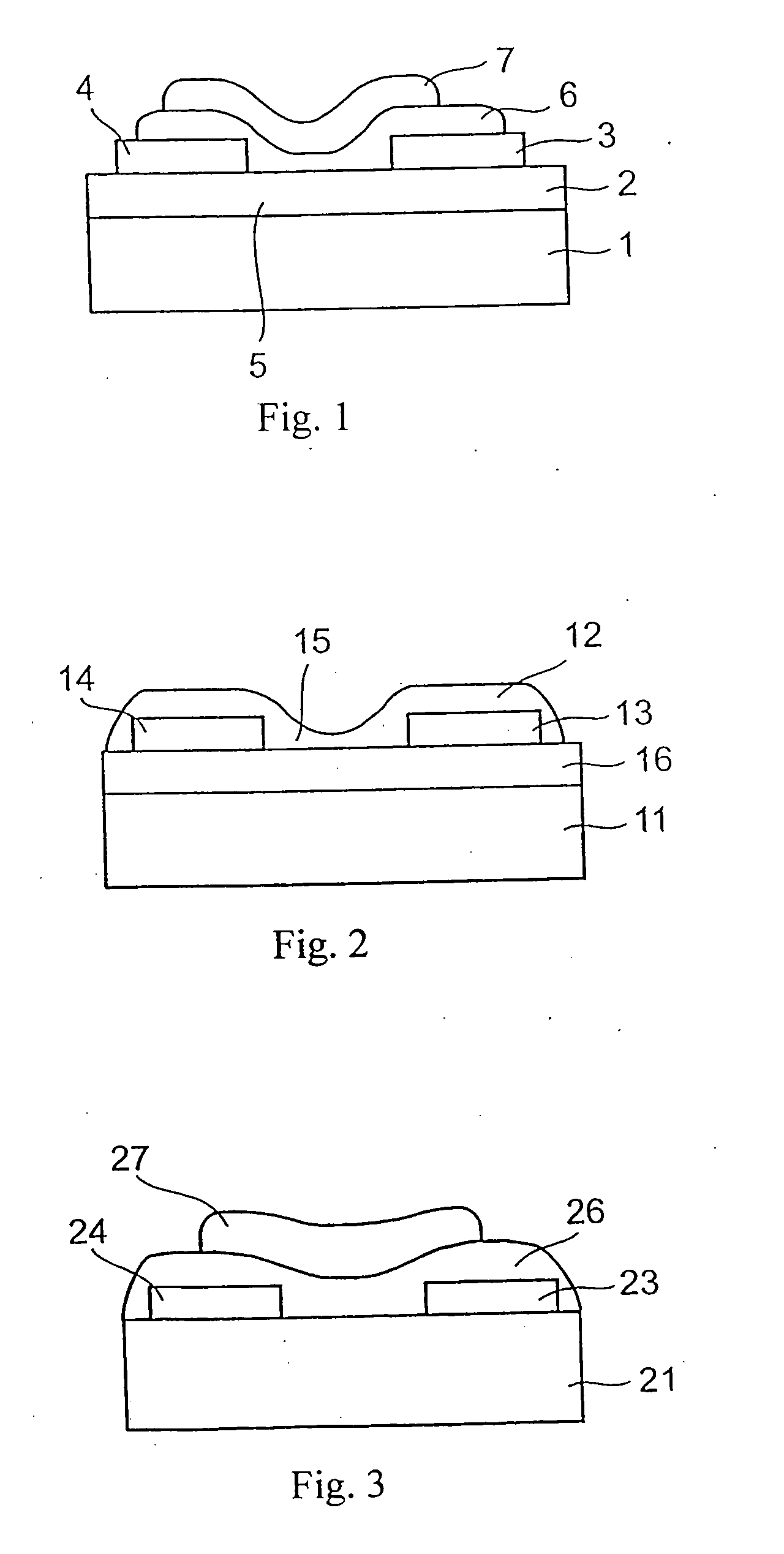Light-emitting device of field-effect transistor type
a field-effect transistor and light-emitting device technology, applied in the direction of semiconductor devices, basic electric elements, electrical appliances, etc., can solve the problems of reducing the efficiency of the contribution of injected carriers to light emission, emitted unnecessary wavelengths, and the foregoing problem of the reduction of light-emission property due to additives is not raised
- Summary
- Abstract
- Description
- Claims
- Application Information
AI Technical Summary
Benefits of technology
Problems solved by technology
Method used
Image
Examples
example 1
Example of Diamond Single Crystal
[0139] As the substrate shown in FIG. 1, preparation was made of a high-pressure / high-temperature synthetic Ib type diamond single crystal having a plate-like shape with the surface being a square with a side of 2 mm and with a thickness of 0.2 mm.
[0140] The surface of the diamond substrate was formed by mechanically surface-polishing a {100} facet of the diamond crystal. The misorientation angle thereof was 0.5°. This crystal diamond substrate was subjected to ultrasonic washing using isopropanol and acetone in order, then immersed into a chromic acid solution with simultaneous application of ultrasonic wave, then further subjected to a so-called RCA washing process to remove adsorbed substances.
[0141] Then, an undoped homoepitaxial diamond film was formed on the diamond substrate as the emission activated member by the use of the microwave plasma chemical vapor deposition (hereinafter, MW-PCVD) method. The washed diamond substrate was attached t...
example 2
Example of Amorphous Carbon
[0162] Preparation was made of a substrate made of synthetic quartz glass and having a square shape with a side of 2 mm and a thickness of 0.2 mm. The substrate surface was mechanically surface-polished, and the average roughness was Ra=5 nm. An RCA washing process like in Example 1 was applied to the substrate to thereby remove adsorbed substances.
[0163] Then, an undoped amorphous carbon hydride (a-C:H) layer was formed as an emission active member on the substrate by the plasma chemical vapor deposition (hereinafter, rf-PCVD) method. The washed quartz substrate was attached to a conductive substrate holder provided in a film forming chamber of an rf-PCVD apparatus, and super-high evacuation (background pressure: 8×10−6 Pa) was carried out. This rf-PCVD apparatus has a structure wherein a high frequency of 13.56 MHz produced from an oscillator is inputted via an impedance matching device into one end of a helical antenna with a pitch of 1.5 cm and 5 tur...
example 3
Example of ZnS:Cu,Al
[0174] On an Si (p-type; resistivity: 8 Ωcm) substrate having a size of 15×15 mm and a thickness of 650 μm and having on the surface thereof a thermally oxidized film of 200 nm as an insulator, a source electrode and a drain electrode each having a size of 1 mm×2 mm and a thickness of 80 nm were disposed at an interval of 20 μm therebetween (with sides of 2 mm facing each other) by the high-frequency sputtering method using Au as an electrode material.
[0175] Further, ZnS:Cu,Al as an emission active member was stacked thereon by electron-beam deposition. The film formation was carried out at a substrate heating temperature of 250° C. by the use of a ZnS pellet having a Cu concentration of about 0.1 mol % and an Al concentration of about 0.3 mol %, respectively, as a deposition source. The film thickness was set to 500 nm. The formed film contained 0.08 mol % of Cu and 0.26 mol % of Al.
[0176] In the formed ZnS:Cu,Al layer, the mobility of electrons was 12 cm2 / V·...
PUM
 Login to View More
Login to View More Abstract
Description
Claims
Application Information
 Login to View More
Login to View More - R&D
- Intellectual Property
- Life Sciences
- Materials
- Tech Scout
- Unparalleled Data Quality
- Higher Quality Content
- 60% Fewer Hallucinations
Browse by: Latest US Patents, China's latest patents, Technical Efficacy Thesaurus, Application Domain, Technology Topic, Popular Technical Reports.
© 2025 PatSnap. All rights reserved.Legal|Privacy policy|Modern Slavery Act Transparency Statement|Sitemap|About US| Contact US: help@patsnap.com


